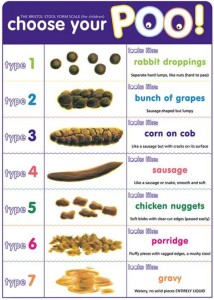Fat, protein and carbohydrates (aka Carbs) receive a lot of attention when talking about health and nutrition. There is no doubt that each of these macronutrients are essential and definitely deserve to be spoken about, but what about fibre? Some of you may be thinking, who cares about fibre or perhaps you’re not entirely sure what fibre is and what it does? Allow me to educate you on the many benefits of fibre and why we all should be taking a closer look at how much fibre we’re consuming.
Dietary Fibre is found in the indigestible parts of plants, which means that it is not completely digested or broken down by our bodies. It passes through our digestive system and helps to maintain a healthy bowel. Fibre also assists with weight loss, stabilising blood glucose levels in the blood and reducing high cholesterol. Common disorders that can arise from not eating enough fibre include:
- Constipation: small, hard faecal matter that is difficult to pass. Fibre helps to soften and bulk-up stools, promoting regular bowel motions and ease of passing stools.
- Diverticulitis: small hernias of the digestive tract caused by long-term constipation
- Overweight and Obesity: foods that are higher in fibre make you feel fuller for longer; take longer to chew, reducing meal size; and tend to be less energy-dense than other foods, meaning that they contain fewer kilojoules or calories for the same amount of food.
- Diabetes: eating a diet high in fibre slows glucose absorption from the small intestine into the blood. This reduces the possibility of a surge of insulin, the hormone produced by the pancreas to stabilise blood glucose levels.
- Colon Cancer: each 10 grams of fibre that is consumed each day equates to a 10% reduction in the risk of developing colorectal cancer. It is thought that fibre reduces the amount of carcinogens (substances that are capable of causing cancer in living tissue) that are present in the diet. Also, bacterial fermentation of fibre results in the production of short-chain fatty acids, which are thought to have a protective effect against cancer of the colon.
- Coronary Heart Disease: Fibre binds to cholesterol in the bowel preventing cholesterol reabsorption and therefore assisting to lower cholesterol levels. Combined with this is the other positive effects that fibre has on our body including reducing blood pressure, promoting weight loss and improving insulin sensitivity – thereby reducing the overall risk of developing Coronary Heart Disease.
Unfortunately, most Australians do not consume enough fibre with the average intake being approximately 20-25 grams a day. The Heart Foundation recommends for adults to consume between 25-30 grams of fibre per day.
Now, whilst most of you probably go about your “daily business” (a.k.a. doing a number 2) without giving it much thought, I encourage you to start paying close attention, you’d be surprised at what you can learn from your poo (stool or faeces sounds too serious don’t you think?). Forgive me if I’ve made you feel a bit uncomfortable (or perhaps made you have a little giggle), the truth is that as a dietitian I have probably become somewhat de-sensitised to talking all things bowel related but I urge you to get comfortable and take a closer look…literally. Why you ask? Because the look of your poo is a fantastic indicator as to whether or not you’re consuming enough fibre. So what is it exactly that you should be looking for, what is “normal” and what isn’t? As a basic rule of thumb (or should I say poo), here is an excellent illustration (formally known as the Bristol Stool Chart) that categorises your poo for you:
Basically, if you are a category 3 or 4 on the chart then you have healthy poo and you’re consuming a good amount of fibre. If however, you’re a category 1-2 then you most likely are not consuming enough fibre and are at risk of developing various health complications and disorders that were discussed above.
Dietary sources high in fibre include:
- All vegetables and fruits
- Wholegrains
- Nuts
- Oat, Wheat, Corn and Rice Bran
- Psyllium Husk/Hull
- Beans
- Lentils and Legumes
- Barley
- Flaxseed
To sum it up: Whilst carbohydrate, protein and fat are all important nutrients that need to be considered in our diet, fibre is often (for whatever reason) placed in the back seat. I hope that after reading this post, you realise and understand why it is so important to not forget about fibre. If you are unsure as to whether you’re consuming enough fibre, or would like some more information, don’t hesitate to book an appointment with me at Eating 4 Health.
Nikki Casini Accredited Practicing Dietitian

